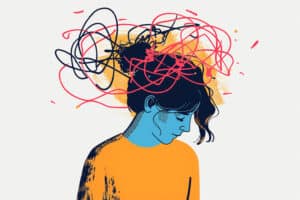Students and Eating Disorders
Eating Disorders Among Students
It is essential for high school and college-level students dealing with eating disorders to receive support and resources as they navigate a complex landscape toward recovery. Magnolia Creek recognizes the widespread challenges facing college students and young professionals. There are many factors that contribute to the onset of these disorders, including academic pressure, social change, and underlying mental health conditions. Regardless of where students are in their journey, Magnolia Creek offers resources tailored to help them find treatment, build a supportive network, and receive compassionate care.
Eating Disorder Signs & Symptoms
Early detection of an eating disorder significantly boosts the chance of recovery. Thus, recognizing the warning signs is crucial.
This isn’t meant to be a checklist. A person with an eating disorder typically won’t display all these signs and symptoms simultaneously, as they vary across different disorders and don’t always fit neatly into categories. Instead, these lists provide a general overview of behaviors that might signal a problem.
- Emotional and Behavioral Signs and Symptoms
- Preoccupation with weight loss, food, calories, and dieting
- Extreme concern with body size and shape
- Withdraws from friends and previously pleasurable activities
- Becomes more isolated and secretive
- Frequent checking in the mirror for perceived flaws in appearance
- Extreme mood swings
- Makes excuses to avoid mealtimes or situations involving food
- Physical Signs and Symptoms
- Noticeable fluctuations in weight, both up and down
- Difficulties concentrating
- Feeling cold all the time
- Dizziness, especially upon standing
- Sleep problems
- Dry skin and hair, and brittle nails
- Muscle weakness
- Impaired immune functioning
Eating Disorder Triggers & Contributing Factors in Students
Academic Stress
Body Image Concerns
Transitions and Life Changes
Perfectionism
Peer Pressure
Cultural and Media Influences
Social Isolation
College Programming at Magnolia Creek
Hear from Kate Fisch, AVP of Clinical Operations, talk about college programming and the resources available to students at Magnolia Creek.
College Eating Disorder Statistics
13%
Eating disorder risk among US college students increased substantially by 13 percentage points from 2013 to 2020/2021.
22%
ED screening on college campuses is seriously lacking—only 22% of colleges reported offering year-round ED screening opportunities and only 45% offered ED screenings once per year or semester.
20%
Only about 20% or fewer of the students who screened positive for an eating disorder reported receiving treatment for their eating disorder.
10%
It is estimated that 10-20% of women and 4-10% of men in college may have an eating disorder.
Resources for Individuals Struggling With Eating Disorders
Self-Advocacy – Don’t Weigh Me
In recovery, if you understand your triggers, and know that it’s best not to know your weight, then you can communicate your needs at your next medical appointment.
Self-advocacy requires assertive communication, which makes it possible to:
- Communicate triggers
- Set boundaries
- Stand up for yourself
- Ask for help
- Build and maintain healthy relationships
- Feel engaged in recovery
Screenshot or print a “Don’t Weigh Me” card to advocate for yourself at your next medical appointment.
College Leave of Absence for Eating Disorder Treatment
Taking a leave of absence from school for eating disorder treatment requires careful planning to ensure your academic responsibilities are managed and your privacy and well-being are maintained. Here are some tips to help you navigate this process:
- Understand School Policies and Your Rights
- Review School Policies & Consult the Administration
- Communicate with Key Individuals
- Formal Request: Submit a formal request for a leave of absence.
- Academic Planning
- Notify Professors
- Discuss options for withdrawing from courses or receiving incomplete grades.
- Academic Support: Seek advice from your academic advisor.
- Focus on Recovery
- Follow Treatment Plans: Adhere to the treatment plan prescribed by your healthcare providers.
- Self-Care: Prioritize self-care activities that promote your physical and mental well-being.
- Plan for Your Return to School
- Reintegration Plan: Work with your academic advisor to develop a plan for your return, which may include a reduced course load or additional support services.
- Continued Support: Maintain any ongoing therapy or support group sessions to help you transition back to school while continuing your recovery
- By following these steps, you can manage your leave of absence effectively, ensuring that you receive the necessary treatment while maintaining your academic progress and personal well-being.
Related Resources
Frequently Asked Questions
How can friends and family support a student with an eating disorder?
What steps can schools take to create a supportive environment for students with eating disorders?
What resources are available for students struggling with eating disorders?
How can eating disorders impact a student's ability to attend and participate in school?
Physical health issues, difficulties with concentration, memory, and decision-making, emotional and psychological impact including anxiety,
If you’d like to learn more about treatment at Magnolia Creek, our compassionate team is here to help.


